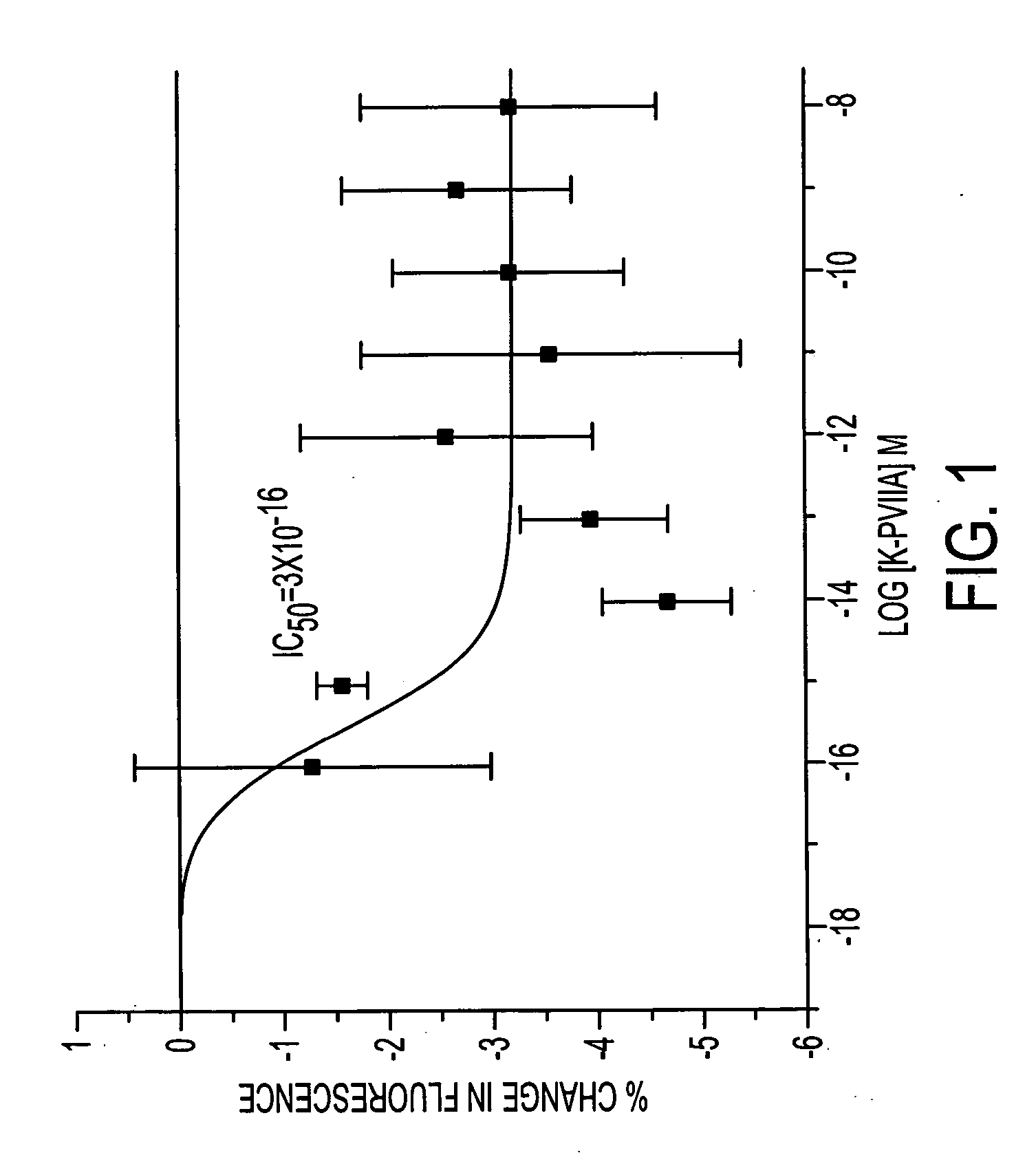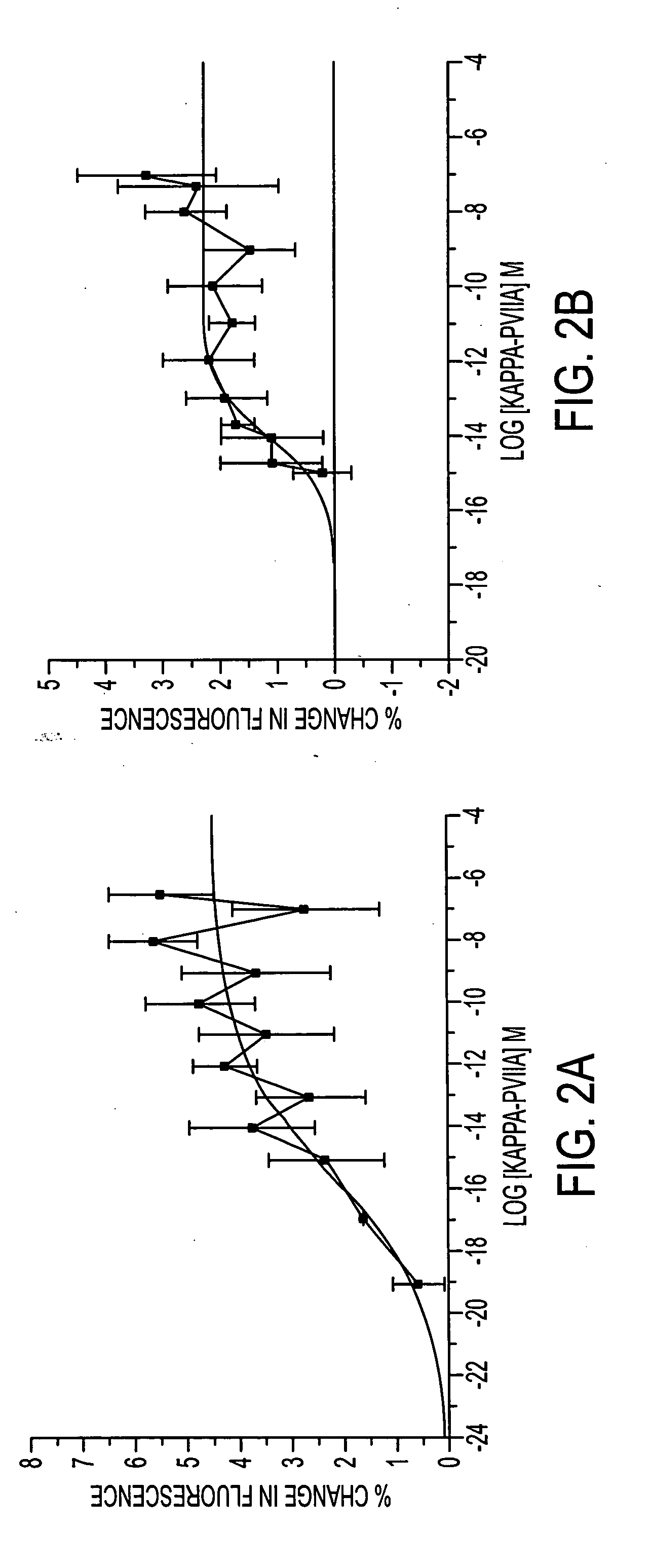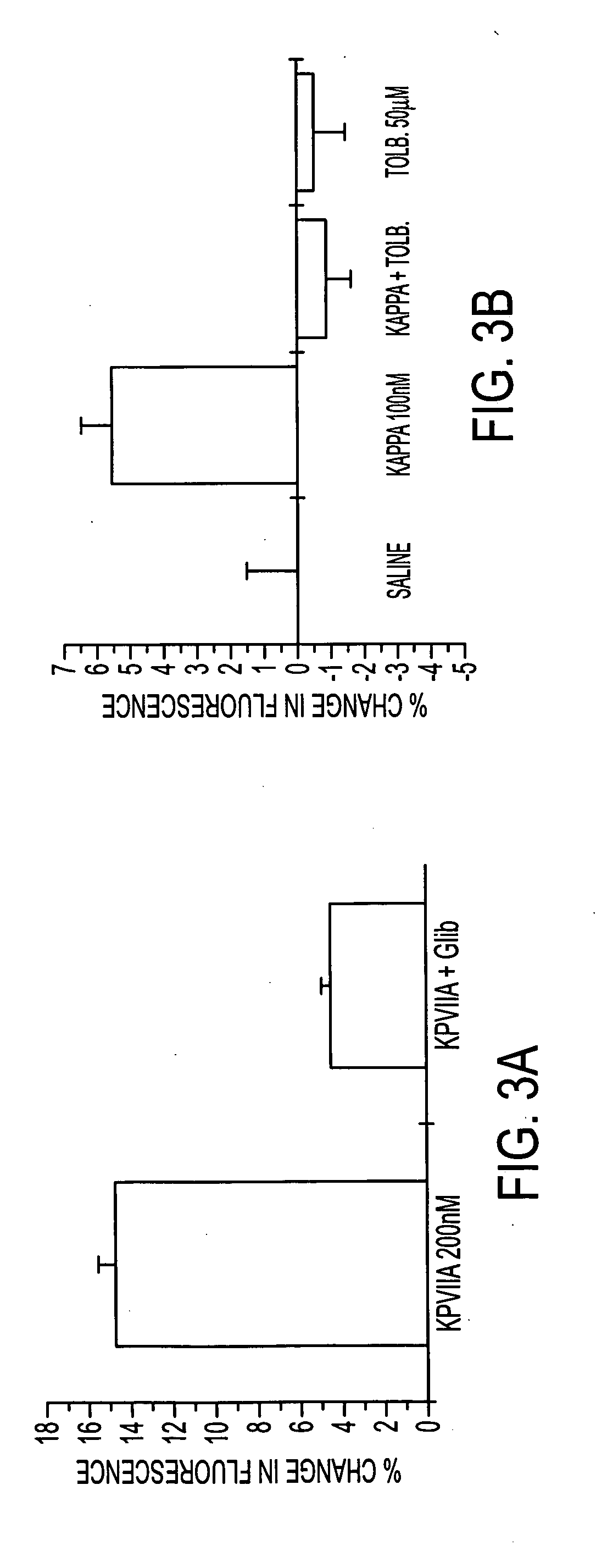Uses of kappa-conotoxin PVIIA
a technology of kappaconotoxin and pviia, which is applied in the field of use of kappaconotoxin pviia, can solve the problems of limited use in the clinical field of kappa-conotoxin pviia, and achieve the effect of being easily synthesized
- Summary
- Abstract
- Description
- Claims
- Application Information
AI Technical Summary
Benefits of technology
Problems solved by technology
Method used
Image
Examples
example 1
[0066] 1. Cell Culture Protocol
[0067] Primary cultures of rat neonatal cortical cells, ventricular myocytes, tracheal smooth muscle cells and hippocampal cells were prepared. Cortical hemispheres were cleaned of meninges and the hippocampus removed and dissociated separately using 20 U / ml Papain. Cells were dissociated with constant mixing for 45 min at 37° C. Digestion was terminated with fraction V BSA (1.5 mg / ml) and Trypsin inhibitor (1.5 mg / ml) in 10 mls media (DMEM / F12±10% fetal Bovine serum ±B27 neuronal supplement; Life Technologies). Cells were gently triturated, to separate cells from surrounding connective tissue. Using a fluid-handling robot (Quadra 96, Tomtec) cells were settled onto Primaria-treated 96 well plates (Becton-Dickinson). Each well was loaded with approximately 25,000 cells. Plates were placed into a humidified 5% CO2 incubator at 37° C. and kept for at least five days before fluorescence screening. Ventricles were diced into 2 mm squa...
example 2
Exposure to κ-PVIIA Produces a Dose-Dependent Decrease in Intracellular K+
[0086]κ-PVIIA was originally isolated from the purple cone snail (Conus purpurascens) and was found to block the Drosophila H4 shaker K+ channel (Shon et al, 1998). In the same study no effects of the peptide were noted in oocytes expressing the mammalian shaker-like voltage-sensitive K+ channels Kv1.1 and Kv1.3. The potential of the peptide to block other voltage-gated K+ channels present in primary cultures of cortex was tested in this study. A 96-well fluorimetry assay was used to look for changes in potassium levels under depolarized conditions where voltage-gated potassium channels (Kv) would be activated. The cells were preloaded with the potassium indicator dye PBFI. If the compound acted to block Kv channels in a depolarized environment, there would be a resultant increase in intracellular K+. The results, however, suggested that at concentrations up to 100 nM, there was a reduction in the intracellula...
example 3
Exposure to κ-PVIIA Produces Dose-Dependent Hyperpolarization
[0087] The fluorimetry experiments were repeated in the presence of the voltage-sensitive dye Di-8-ANEPPs, and the drop in intracellular K+ levels was seen to be accompanied by a significant hyperpolarization of the preparation (represented by a positive shift in the fluorescence, FIGS. 2A-2B). κ-PVIIA is extremely potent in this assay, showing EC50s of 8×10−16 M in cortex, 9×10−16 M in myocyte cultures and 9×10−18 M in primary cultures of tracheal myocytes.
PUM
| Property | Measurement | Unit |
|---|---|---|
| Size | aaaaa | aaaaa |
Abstract
Description
Claims
Application Information
 Login to View More
Login to View More - R&D
- Intellectual Property
- Life Sciences
- Materials
- Tech Scout
- Unparalleled Data Quality
- Higher Quality Content
- 60% Fewer Hallucinations
Browse by: Latest US Patents, China's latest patents, Technical Efficacy Thesaurus, Application Domain, Technology Topic, Popular Technical Reports.
© 2025 PatSnap. All rights reserved.Legal|Privacy policy|Modern Slavery Act Transparency Statement|Sitemap|About US| Contact US: help@patsnap.com



